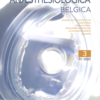Anaesthetist’s adherence to aseptic ultrasound practices when performing Ultrasound Guided Peripheral Intravenous Cannulation (USGPIVC). A quality improvement project
Ultrasonography, Catheterisation, Peripheral, Catheter Related Infections, Asepsis
Published online: Dec 03 2022
Abstract
Background: Sterile ultrasound covers and conducting mediums are recommended when performing ultrasound guided percutaneous procedures to minimise risk of infection to the patient. Purpose manufactured ultrasound transducer cover kits meet these requirements. Transparent dressings meet some of these requirements however, they are not approved for use as ultrasound transducer covers. We recognised that our departmental practice may not adhere to these standards.
Objective: The primary objective was to identify and improve the rate of adherence to the recommended aseptic precautions by anaesthetists performing ultrasound guided percutaneous procedures at the Department of Anaesthesia, Royal Brisbane and Women’s Hospital, the largest tertiary referral hospital in Queensland, Australia. Secondary objectives were to identify types and rates of use of various probe covers and ultrasound conductive mediums used.
Design: A complete quality improvement cycle was undertaken using a plan, do, study, act model. Methods: Firstly, a departmental wide voluntary survey was distributed in March 2019 focused on practitioner’s baseline aseptic practices for ultrasound guided peripheral intravenous cannulation (USGPIVC). Subsequently a suite of interventions were undertaken between May 2019 to April 2020 focusing on highlighting recommended aseptic practices through the use of high-quality sterile transducer covers and sterile conducting mediums for all ultrasound guided percutaneous procedures. Components of the intervention included the development of a departmental policy, educational activities, and improving equipment availability and access. A post- intervention follow up audit was repeated in April 2020 to measure changes in practice. Results: Of 134 anaesthetic consultants or trainees 58 completed the pre-intervention survey and 47 completed the post- intervention survey. After the intervention the use of recommended transducer covers and conducting mediums increased from 10.3% to 76.6% and 58.6% to 83.0% respectively. Participants were more likely to choose both a recommended transducer cover and conducting medium than at least one non-recommended option ([OR] 20.4, 95% CI: 7.1 - 58.4). There was a 122% increase in the number of recommended transducer cover kits ordered when comparing stock inventory over a six-month period before and after the intervention.
Conclusion: Adherence to the recommended aseptic precautions for USGPIVC improved after the implementation of educational interventions.
